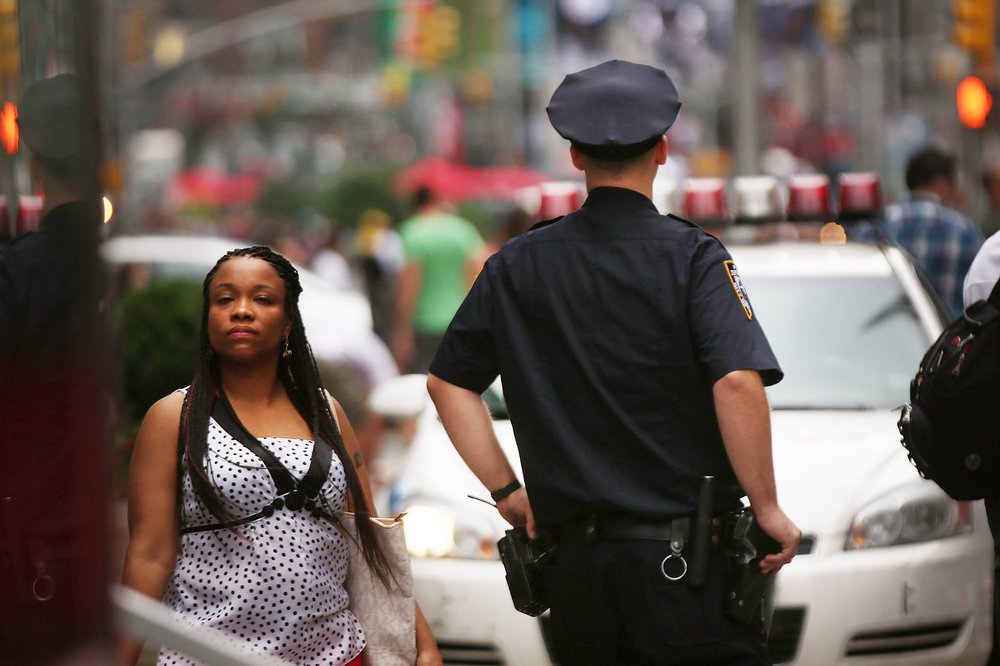NYC lawmakers set to require NYPD to report low-level stops
Dec. 12, 2023, 6:01 a.m.
The highly-anticipated How Many Stops Act is expected to pass next week.

A bill that would require the NYPD to report “low-level” police encounters cleared a major hurdle Monday, when City Council Speaker Adrienne Adams threw her support behind the measure.
The How Many Stops Act, which city records show has 32 co-sponsors, is expected to pass in the Council’s last meeting of this year on Dec. 20, according to Councilmember Alexa Avilés. Both Avilés and Public Advocate Jumaane Williams introduced the legislation in July 2022.
The NYPD is already required to document stop-and-frisk reports and arrests, which legally require officers to have “reasonable suspicion” or “probable cause” that someone is committing, has committed or is about to commit a crime, according to the NYPD training guide.
But the How Many Stops Act governs lower level stops — called “level one” or “level two” stops — which are police encounters where the subject is legally free to leave, including when police stop someone to ask where they are going or for their I.D. Some New Yorkers said these seemingly-innocuous stops can have catastrophic consequences, escalating to violence or unlawful arrests.
Avilés said requiring police to report low-level stops would give lawmakers crucial information about who is being stopped, where and how often.
“We’re trying to understand the scale and scope of policing in New York City,” she said.
The bill would require the NYPD to post the data on its website every quarter. Another section of the bill package introduced by Councilmember Crystal Hudson would require police to report when someone declines to give an officer consent to search them.
Police stops under Mayor Eric Adams, a former police officer, are on the rise, according to police data. Adams brought back the department’s controversial Neighborhood Safety Teams – teams of officers tasked with keeping illegal guns off the streets.
Former Mayor Bill de Blasio disbanded those units in 2020 in response to findings that they accounted for a disproportionate number of fatal shootings and civilian complaints. Last year, a federal monitor found that 24% of stops made by those teams were unconstitutional.
Still, despite the uptick in stops under Adams, police have stopped just a fraction of the people they did at the height of former Mayor Michael Bloomberg’s stop-and-frisk era this year — from nearly 700,000 stops in 2011 to 8,502 in the first half of 2023, according to police data.
But even starker racial disparities exist. Of the tens of thousands of pedestrians who’ve been stopped since Adams took office, just 5% of them were white compared to 9% under Bloomberg, Gothamist previously reported.
The proposed legislation comes as the city re-examines the difficult legacy of stop and frisk a decade after a federal judge ruled that its application by the NYPD was unconstitutional. Adams, who ran on a message of public safety, said during his 2021 campaign that stop and frisk was a useful policing tool if used correctly.
A spokesperson for the mayor’s office did not immediately reply to an inquiry.
Of the 7,000 Black and Latino pedestrians the NYPD reported stopping through July of this year, roughly 72% were deemed innocent and let go. Meanwhile, police arrested nearly 40% of white New Yorkers they stopped, according to NYPD data.
Chris Dunn, the NYCLU's legal director, previously told Gothamist that’s because white people are more likely to be stopped because of their behavior, while Black and Latino people are more likely to be stopped because of bias.
Black and Latino people are “much less likely to get arrested because the stops are bogus from the get-go,” Dunn said.
“For white people, their race is playing much less of a role and their actual suspicious behavior is playing a real role – and that produces a higher arrest rate.”
Still, “the vast majority of police encounters go unreported,” said Donna Lieberman, executive director of the New York Civil Liberties Union. That’s especially the case with low-level stops, when officers ask people for their name, identification or where they are going.
“We need to find out what’s going on with the NYPD, who are they stopping, where are they stopping, what’s the demographic and why," Lieberman said.
NYPD Chief of Department Jeffrey Maddrey said he thinks the law will make police work unduly cumbersome.
“I understand that advocates want more accurate data,” Maddrey said, adding that he was willing to share information on “level two” stops, which he called “more intrusive.”
But reporting “level one” stops, which police label as “non-accusatory questions,” would be unwieldy for officers, he said.
“If I’m chasing a suspect and I turn the corner and I look at a person and say, ‘You see where the person ran?’ … Now I have to remember, ‘Oh my god, was the person Black? Hispanic? Were they Middle Eastern?’”
He added, “We encounter millions of people throughout a year, but it doesn’t tell you what the tone of the stop was like. It could be the most innocuous conversation.”
Samy Feliz said he’s stopped about once a month. Telling his mom about these encounters is triggering, he said.
Samy’s brother Allan Feliz was shot and killed by NYPD officers during a traffic stop over an alleged seatbelt violation in 2019.
“[My mom] feels like my life is in danger at all times,” Feliz said. “It makes you question everything you do … Comply or die.”
Correction: Due to an editing error, this story has been updated to reflect that the legislation was first introduced in July 2022.
The NYPD has stopped tens of thousands of people under Mayor Adams. Just 5% were white.